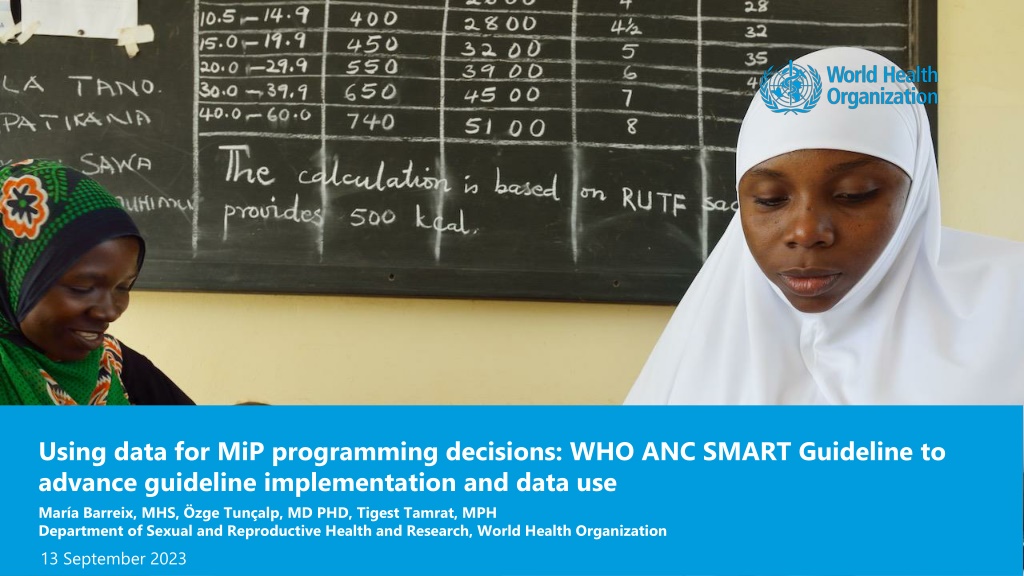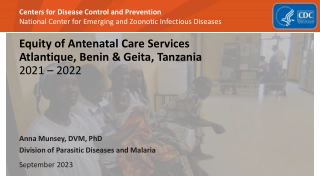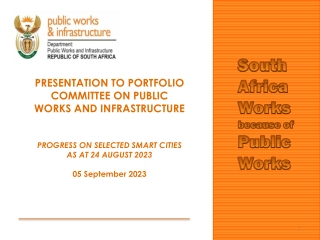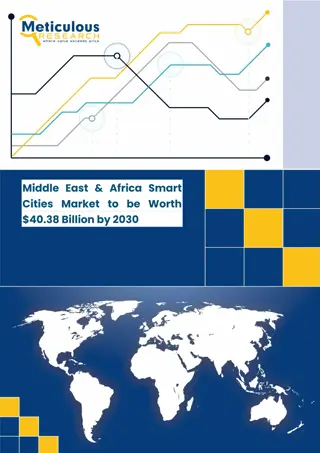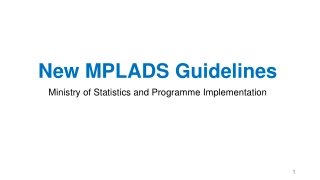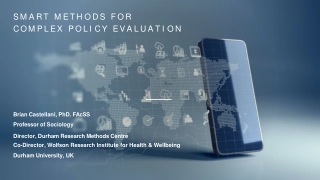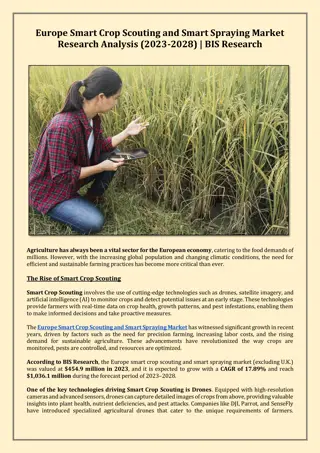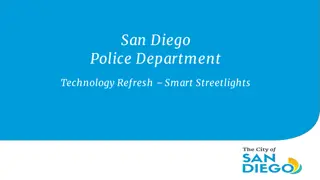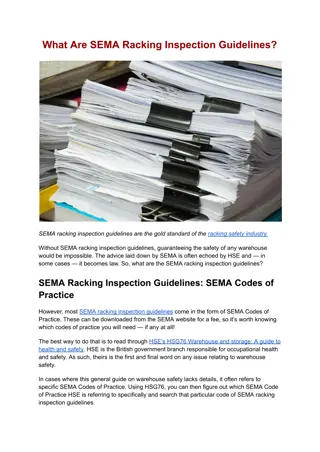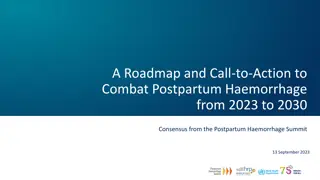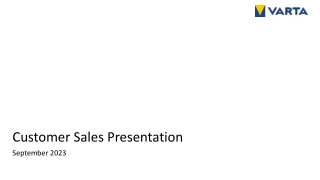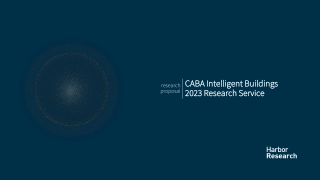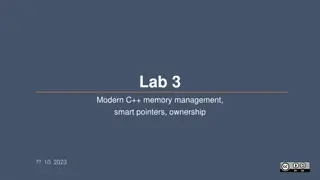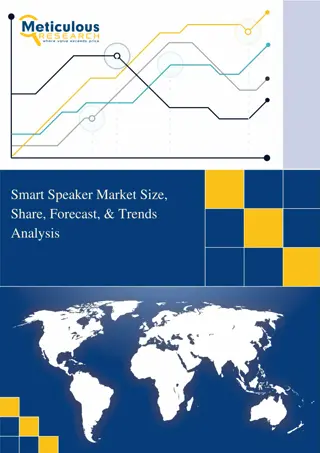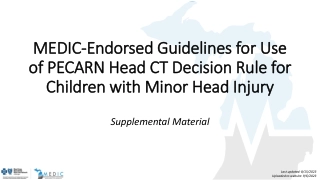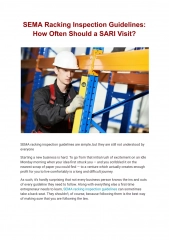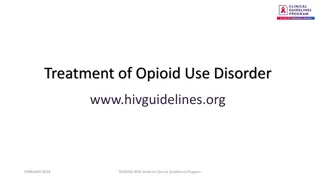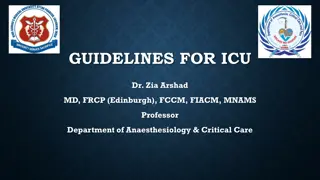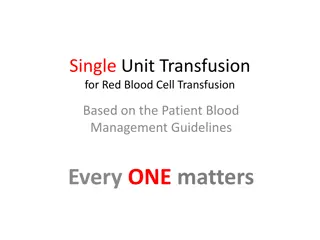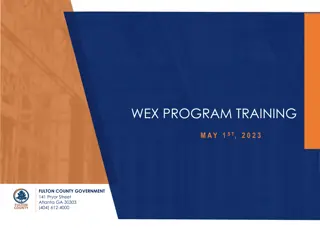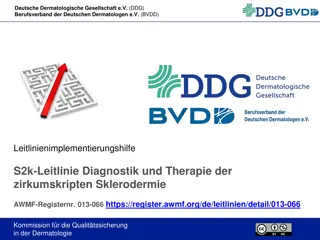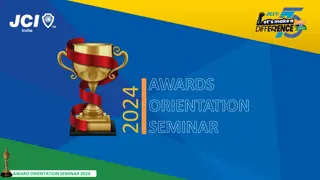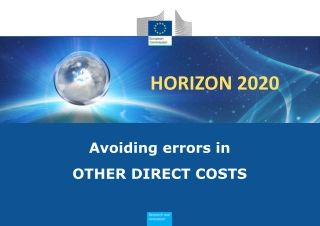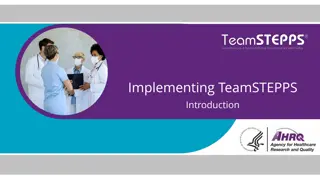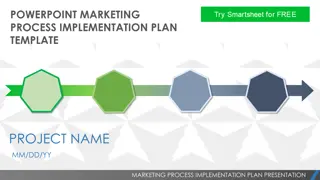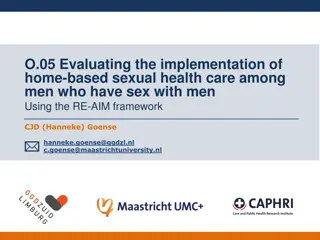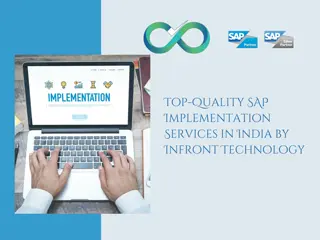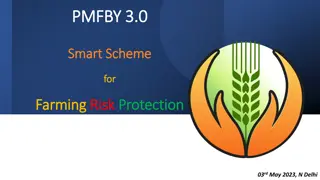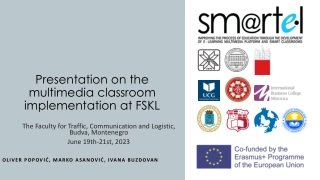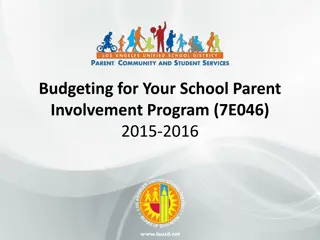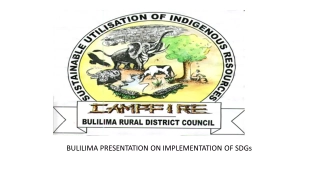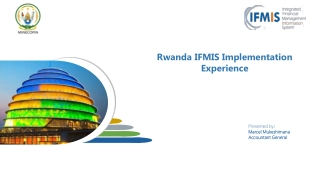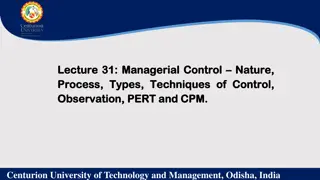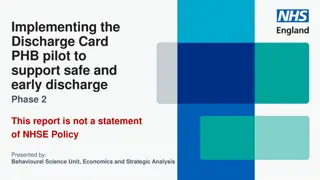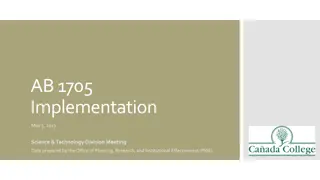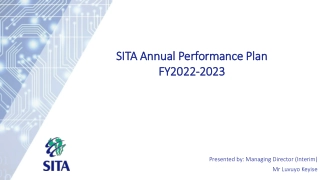Enhancing Implementation of WHO ANC SMART Guidelines
Implementing WHO guidelines efficiently can be challenging, with long timelines and limited accuracy during adaptation. The SMART guidelines aim to revolutionize antenatal care by providing adaptable, evidence-based recommendations for a positive pregnancy experience. This initiative includes the development of digital tools and resources to facilitate guideline implementation at both national and global levels, ultimately striving for high-quality, person-centered care delivery in alignment with national directives.
Uploaded on Apr 05, 2024 | 1 Views
Enhancing Implementation of WHO ANC SMART Guidelines
PowerPoint presentation about 'Enhancing Implementation of WHO ANC SMART Guidelines'. This presentation describes the topic on Implementing WHO guidelines efficiently can be challenging, with long timelines and limited accuracy during adaptation. The SMART guidelines aim to revolutionize antenatal care by providing adaptable, evidence-based recommendations for a positive pregnancy experience. This initiative includes the development of digital tools and resources to facilitate guideline implementation at both national and global levels, ultimately striving for high-quality, person-centered care delivery in alignment with national directives.. Download this presentation absolutely free.
Presentation Transcript
Using data for MiP programming decisions: WHO ANC SMART Guideline to advance guideline implementation and data use Mar a Barreix, MHS, zge Tun alp, MD PHD, Tigest Tamrat, MPH Department of Sexual and Reproductive Health and Research, World Health Organization 13 September 2023
Today, WHO guidelines can take years to be fully implemented by Member States, and accuracy can be compromised during adaptation World Health Organization (WHO) Ministry of Health (MoH) Implementation & Technology Partners Health Workforce Health Service Users Develops global guidelines using evidence base Adapts guidelines into national guidelines comprising procedures, protocols, datasets and indicators Translate national guidelines into digital solutions Deliver and document health services in accordance with national guidelines Access quality person- centered care, delivered in accordance with national directives on guideline use Today s guidelines are Not integrated quickly or fully into practice Resource intensive to adapt and scale to broader use Difficult to update or digitize with fidelity Infrequently digitized with interoperability and indicator standards
SMART guidelines in practice Antenatal care The WHO envisions a future where everyone in the world benefits fully and immediately from clinical, public health, and data use guidelines
Each layer of SMART Guidelines L1 L5 L3 L4 L2 WHO ANC recommendations for a positive pregnancy experience Standard- based (HL7/FHIR) ANC technical implementation guide WHO digital ANC module: generic version 1.0 ANC Digital Adaptation Kit In progress Narrative Guidelines (Enhanced) Digital Machine-readable Recommendations Reference Software Precision Health Models Adaptation Kits (DAKs) L1.5: Adaptation Toolkit for adapting the WHO recommendations for a positive pregnancy and postnatal experience 4 Twitter @HRPresearch
L1 - WHO ANC recommendations Essential core package of ANC that all pregnant women and adolescent girls should receive With the flexibility to employ different options based on the context of different countries 5 Twitter @HRPresearch
L1.5 - Toolkit for adapting the WHO recommendations for a positive pregnancy and postnatal experience Based on demand from countries, a toolkit to help policymakers adapt and implement the ANC model focusing on an integrated ANC platform (care, supplies, workforce, data systems) and designed for the context and needs of the country Updated version includes WHO ANC monitoring framework for key Can be a basis for updating national data collection tools 6 Twitter @HRPresearch
L2 ANC digital adaptation kit (human readable) 4 Health Interventions & Recommendations Relevant health interventions and recommendations from the WHO guideline and guidance 1 2 3 Business Processes & Workflows Generic Personas User Scenarios Roles, responsibilities, Competencies and essential interventions performed by targeted personas Generic workflows representing clinical and non-clinical processes Brief narrative description of how the targeted personas may engage with the digital system 8 5 6 7 Functional & Non- functional Requirements A non-exhaustive list of key functions and non- functional requirements for a digital tracking and decision support system Core Data Elements Decision Support Logic Indicators & Monitoring Data elements, used for clinical decision-making, indicators, and other data needs Decision tables representing counselling and treatment algorithms, scheduling logic Indicators for reporting and monitoring with numerator, denominator of data elements based on existing guidance 7 Twitter @HRPresearch
Indicators & Monitoring Aggregate indicators & metrics based on data dictionary Indicator Name Numerator Denominator Recommended Disaggregation Examples of CORE ANC Indicators Percentage of antenatal clients with 1st contact before 12 weeks Number of antenatal clients 1st contact before 12 weeks Total number of antenatal clients with a 1st contact Age: 10-14, 15-19, 20+ Education level: None, Primary, Secondary, Higher, Don t know Pregnant women who had an ultrasound scan before 24 weeks of pregnancy (%) Number of antenatal clients who received ultrasound scan before 24 weeks Total number of antenatal clients with gestational age equal to 24 weeks Age Education Level Contact number: 1, 2-3, 4-8, 9+ Pregnant women with at least one blood pressure measurement during pregnancy (%) Example of CONTEXT SPECIFIC ANC Indicators Percentage of women who received three doses or more of intermittent preventive therapy for malaria during their last pregnancy (IPTp) Number of antenatal clients with blood pressure measured Total number of antenatal clients with a 1st contact Age Education Level Number of pregnant women given at least three doses of sulfadoxine/ pyrimethamine for IPTp Number of antenatal clients 1st contact Age Education Level Source: WHO/UNICEF Analysis and Use of Facility Data: Guidance for RMNCAH Programme Managers & WHO ANC global monitoring framework 8 Twitter @HRPresearch
Linkages to health facility data guidance Aggregated data and indicators for reporting Digital Adaptation Kit Individual level data generated at point of care for service delivery Photo: Mark Leong/ HRP 9 Twitter @HRPresearch
L3 - FHIR implementation guide (machine readable) Code necessary for software developers to incorporate standardized logic from WHO guidelines into digital systems Relevant Guideline Recommendation Text Standards-based technical implementation guide builds on DAK content, mapping to Health Level Seven International (HL7) Fast Healthcare Interoperability Resources (FHIR) standards Recommendation Text in semi-structured logic (IF/THEN) Graphical depiction (i.e. decision tree) Develop in collaboration with implementers around the world (weekly calls) 10 Twitter @HRPresearch
L4 - WHO digital ANC module for health care providers Digital decision support and person-centered tracking tool for health care providers Woman-centred, integrated approach to ANC in line with guidelines Based on components of ANC digital adaptation kit Integration for reporting and HMIS, logistics management (LMIS), and local EMRs Customizable for content and cadre within the health system Connection to women (SMS, future home-based care card work) GENERIC VERSION 1.0 11 Twitter @HRPresearch
L5 - Implementation research NAMAI study Objectives include: testing the adapted WHO digital ANC module for improving the implementation of updated ANC packages in Zambia (Eastern Province) and Rwanda (Bugesera, Nyanza and Nyagatare districts) supporting country transition-to-scale by facilitating mobilization of additional funds through government to plan for scale-up and the sustainability of long-term implementation efforts 12 Twitter @HRPresearch
Thank you! Acknowledgements ROs & COs Sanofi Espoir Foundation Bill and Melinda Gates Foundation USAID WHO ANC portal WHO digital related resources Ms Mar a Barreix: barreixm@who.int Dr zge Tuncalp: tuncalpo@who.int Ms Tigest Tamrat: tamratt@who.int 13 Twitter @HRPresearch
